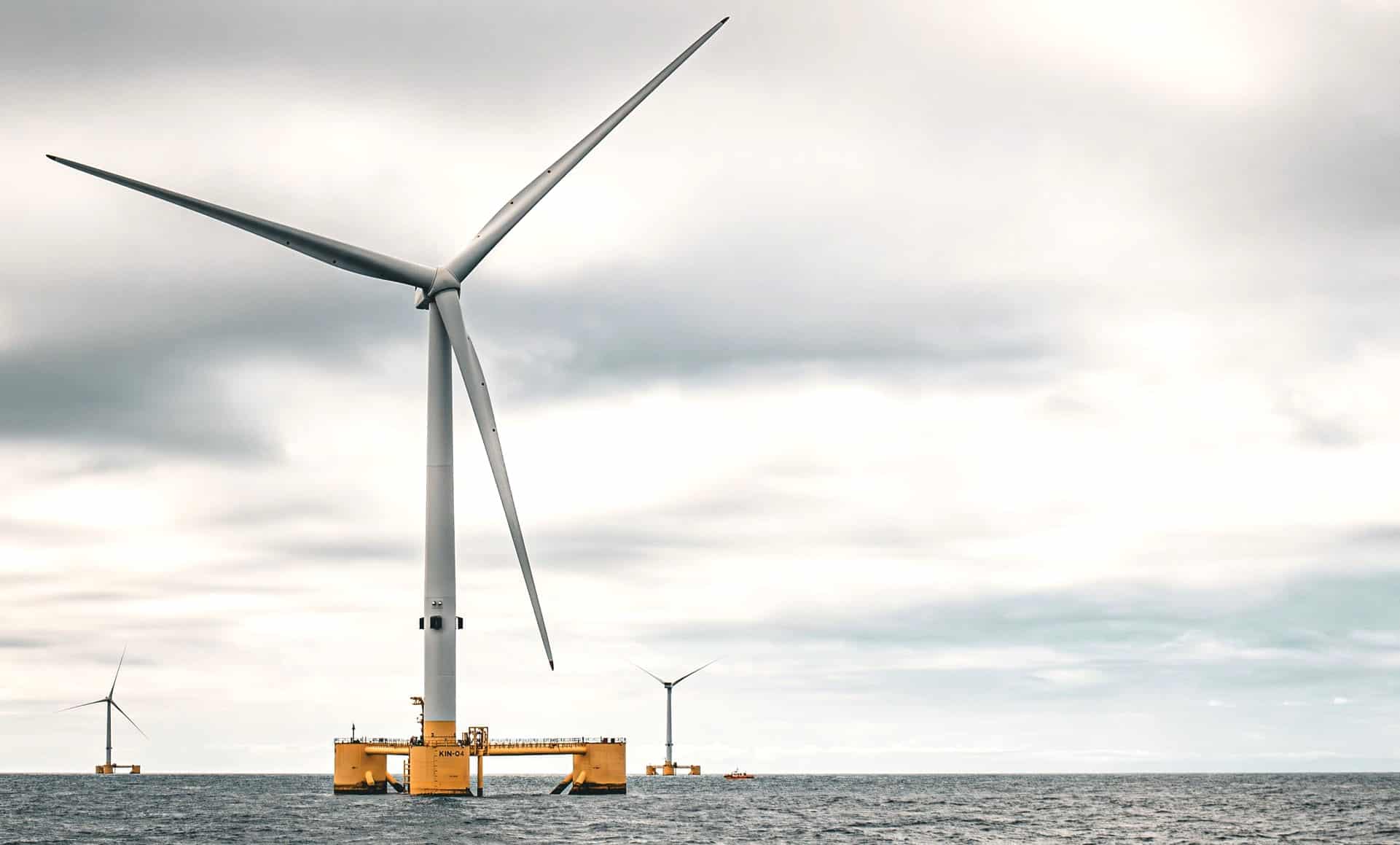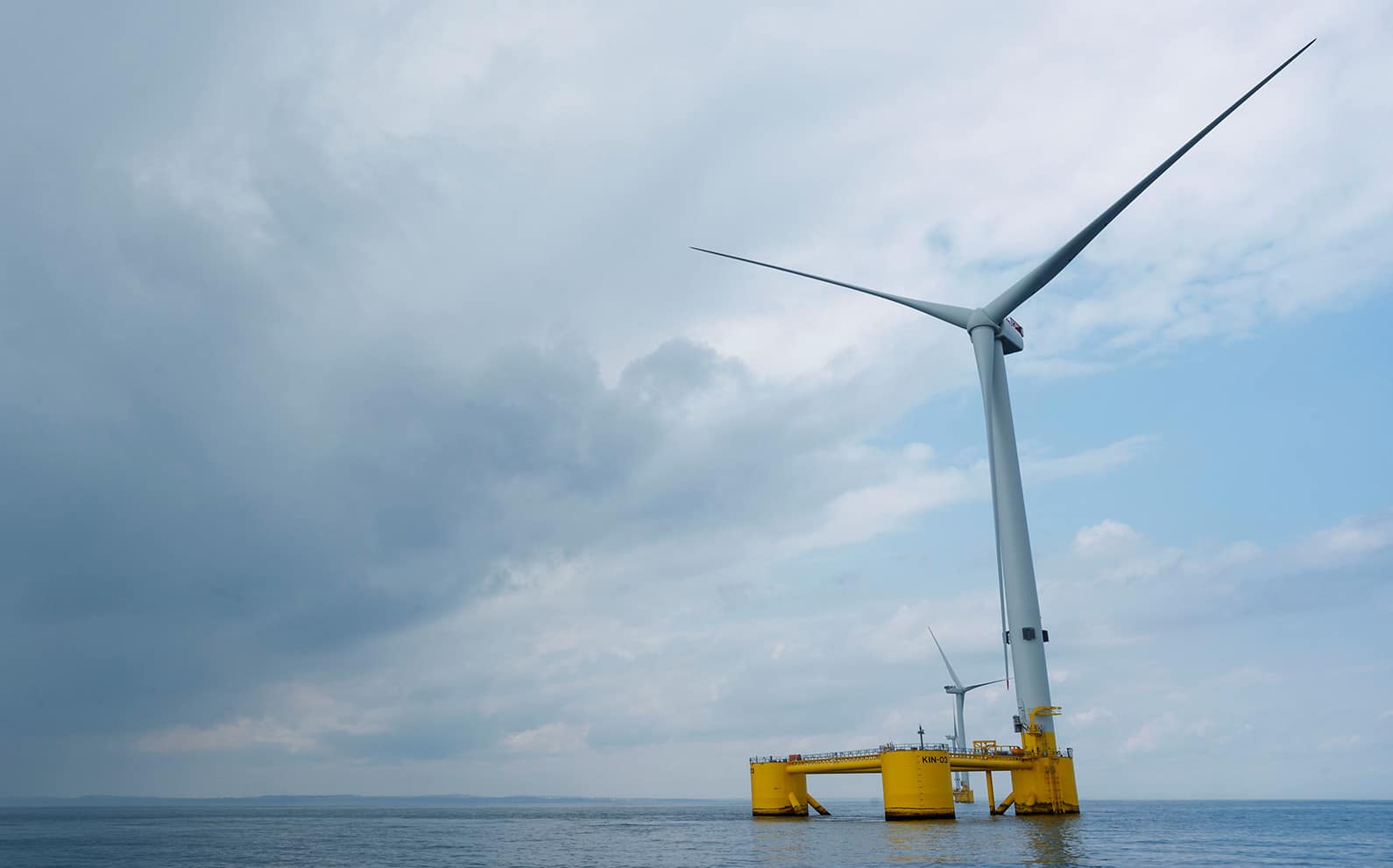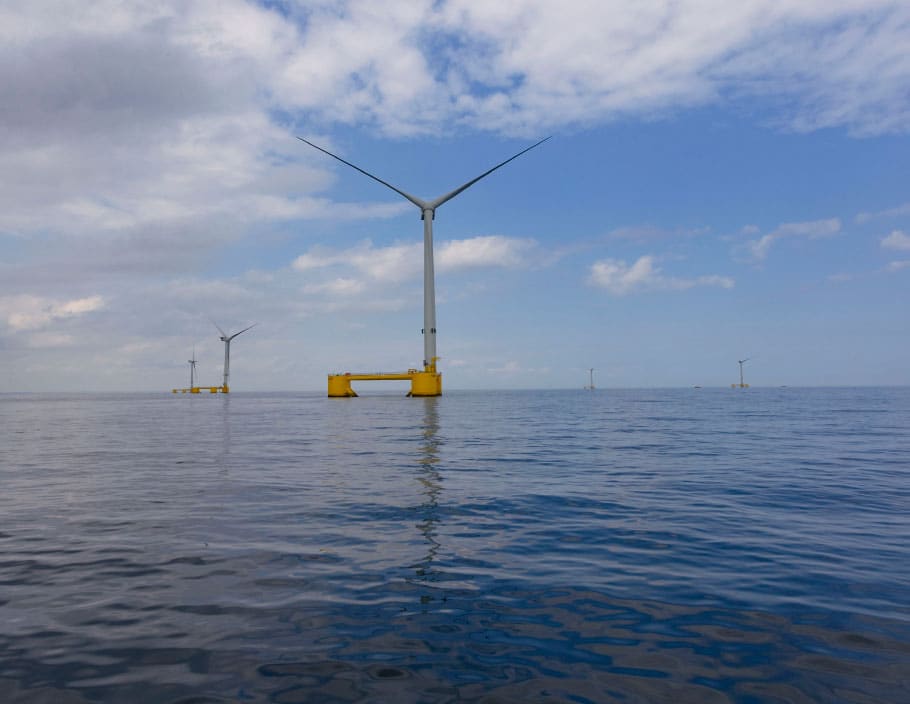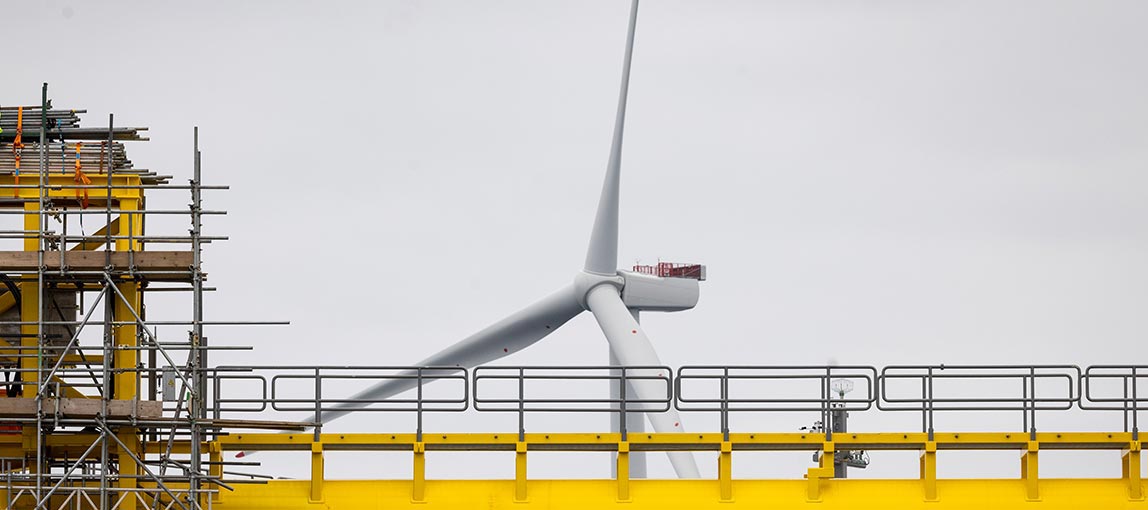We’re developing the grid-connected Green Volt floating offshore wind farm to deliver reliable, renewable electricity to oil and gas platforms as well as the UK grid. Allowing the full retirement of existing offshore power generators, Green Volt will reduce the carbon emissions from the platforms’ diesel and gas generators by 85%.
When operational in 2029, Green Volt expects to be one of the world’s largest offshore floating windfarms and promises to be a landmark opportunity for Scotland and the UK economy. Green Volt will lead to billions of pounds of investment and thousands of skilled jobs – securing Scotland’s leadership in floating offshore wind.

Delivering Net Zero
The project is a major contributor towards the delivering the goals of the North Sea Transition Deal, signed by HM Government and the UK oil and gas industry in 2021. The Transition Deal mandates reductions in emissions from oil and gas production that can only be achieved by using low carbon electricity to power offshore facilities.
The location of the project in the vicinity of oil and gas fields and associated infrastructure presents a unique opportunity and Green Volt has the potential to contribute to the Net Zero targets and to play a role in decarbonisation of the UK economy. Green Volt is deliverable now and is essential if Scotland is to be successful in delivering to its Net Zero targets.

Boosting UK energy security
Green Volt windfarm will be designed to outlast the estimated remaining life of those oil and gas assets it supports, and at end of field life, exports to the UK grid will then increase. Green Volt will then provide renewable power to the UK grid for many decades to come.
Timeline
Flotation Energy was early to recognise the huge opportunity for decarbonising offshore power generation with floating wind technology. Its founders were involved in pioneering projects involving the world’s first electrification of an oil and gas platform as well as conceptualising and delivering Kincardine, the world’s first and largest grid-connected floating windfarm, off the Aberdeenshire coast, Scotland.

2020 – Flotation Energy begins environmental surveys on a redundant oil and gas field in the area, which is in the process of being decommissioned. The brownfield site is confirmed as an exceptional opportunity to create an offshore floating wind farm, with water depths of 90-100m and high-quality wind resource.
2021 – Flotation Energy works with regulators to understand the potential for project “Green Volt”, a project aimed to decarbonise offshore power generation for oil and gas platforms in the North Sea. Flotation Energy completes and submits an Environmental Scoping report to Marine Scotland, reaching the first major milestone in the Marine Consent process. Crown Estate Scotland announces a new leasing round for Innovation and Targeted Oil and Gas Decarbonisation (INTOG).


In January 2023 the Offshore consent application was submitted to the Scottish Government Marine Directorate.
In August 2023 the Onshore planning application was submitted to Aberdeenshire Council.



